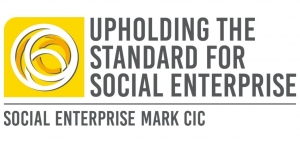How workforce engagement is delivering financial efficiencies
By Brian Jones, Chief Executive of Partnership of East London Co-operatives
 As a Social Enterprise delivering healthcare services, we are committed to the principles upon which we were founded, however, it is equally important to recognise that the organisation has to be financial sustainable to meet future demand.
As a Social Enterprise delivering healthcare services, we are committed to the principles upon which we were founded, however, it is equally important to recognise that the organisation has to be financial sustainable to meet future demand.
I became CEO of the organisation at a time when we had lost a major contract and more than half of the 350 workforce were due to be transferred to the new provider; there was an urgent need to understand the core costs of the business and reduce the size of the organisation.
In order to deliver savings successfully you need to engage with staff, ensuring that they form part of the journey. Senior leaders within the organisation should remain positive about the process, providing reassurance to staff about the future.
In the past six months, we have delivered more than £1million of financial efficiencies, enabling vital funds to be redirected towards the frontline care of patients. This has been achieved in a number of ways, including the renegotiation of property rents, performance management of suppliers and by also focusing on the workforce and the internal culture.
It is important to recognise that any pursuit of cost savings should not be done in isolation or in a way that could be perceived as a ‘top down approach’; this can destabilise a workforce as people naturally feel unsettled and nervous about their job security. In order to deliver savings successfully you need to engage with staff, ensuring that they form part of the journey. Senior leaders within the organisation should remain positive about the process, providing reassurance to staff about the future.
By having this early discussion with staff, they felt part of the process, affording them the opportunity to produce sensible ideas to reducing costs.
I believe that we have been successful, because we have engaged our people in the process, being open and honest about the need to reduce our overheads and reposition the organisation; enabling us to invest in delivering high quality, safe services for the future. Like your organisation, our staff were hardworking and dedicated to delivering a high quality service to the patients that we serve, however, we knew that we needed to focus time and energy upon specific areas. In advance of starting this journey, I met with staff to explain the strategy that we would be pursuing and the rationale for it, ultimately, reducing overheads, enabling us to redirect those savings towards improvements.
By having this early discussion with staff, they felt part of the process, affording them the opportunity to produce sensible ideas to reducing costs. Despite pursuing a significant financial recovery program, the most recent staff survey has produced some unexpected results; high levels of staff satisfaction and recognition from staff that they felt valued by the management. These were some of the highest levels of staff satisfaction that we have achieved in our 14 year history.
Organisations shouldn’t be afraid or embarrassed to renegotiate with suppliers; we pursued an approach of informing our suppliers what we were willing to pay, versus what they were charging us.
With limited contractual information, the fastest way in which I was able to determine potential areas of savings was by simply spending a few hours reviewing our bank statements. This gave me an immediate snapshot of our suppliers, the costs attributable to each and provided me with an understanding of where to focus my time.
Organisations shouldn’t be afraid or embarrassed to renegotiate with suppliers; we pursued an approach of informing our suppliers what we were willing to pay, versus what they were charging us. There are numerous websites available where you can benchmark a vast array of different services, and we were able to use this as a baseline for conducting negotiations. Using this approach, we were able to reduce the cost of across a number of areas ranging from consumables through to software; all without a requirement for us to extend our existing contract periods.
We used a similar approach to that which is widely seen across the retail sector at the moment, of liaising with our landlord to obtain a rent reduction at our corporate offices. Initially hesitant, the landlord agreed a compromise which enabled our organisation to a real term rental and service charge reduction.
Embarking on an efficiency program can be daunting, but this can be a lever to effective change whilst still managing short term priorities with strategic goals and long term vision. It’s a balance between realising the positive economic aspects of change in conjunction with social aspects of workforce engagement.
The process of delivering financial efficiencies are typically focused upon identifying and achieving savings, identifying new ways of working can also be used to reduce costs. We are, at pace, now working with partners across the UK and Europe to develop new services based upon AI technologies. The repositioning of the organisation, coupled with our reduced overheads has meant that we have been able to pursue growth opportunities – we are on course to increase turnover by 20% this year.
Workplace change shouldn’t necessary have a negative effect. In our case, whilst undoubtedly there were pressures of managing an increased workload, there was an upbeat vibe across the organisation. Embarking on an efficiency program can be daunting, but this can be a lever to effective change whilst still managing short term priorities with strategic goals and long term vision. It’s a balance between realising the positive economic aspects of change in conjunction with social aspects of workforce engagement. Leadership provides the key, to facilitate and realise cost savings within a stable environment. Once balance is achieved, it then provides a platform for growth, sustainable development and produces the foundations from which the organisation can build upon.





